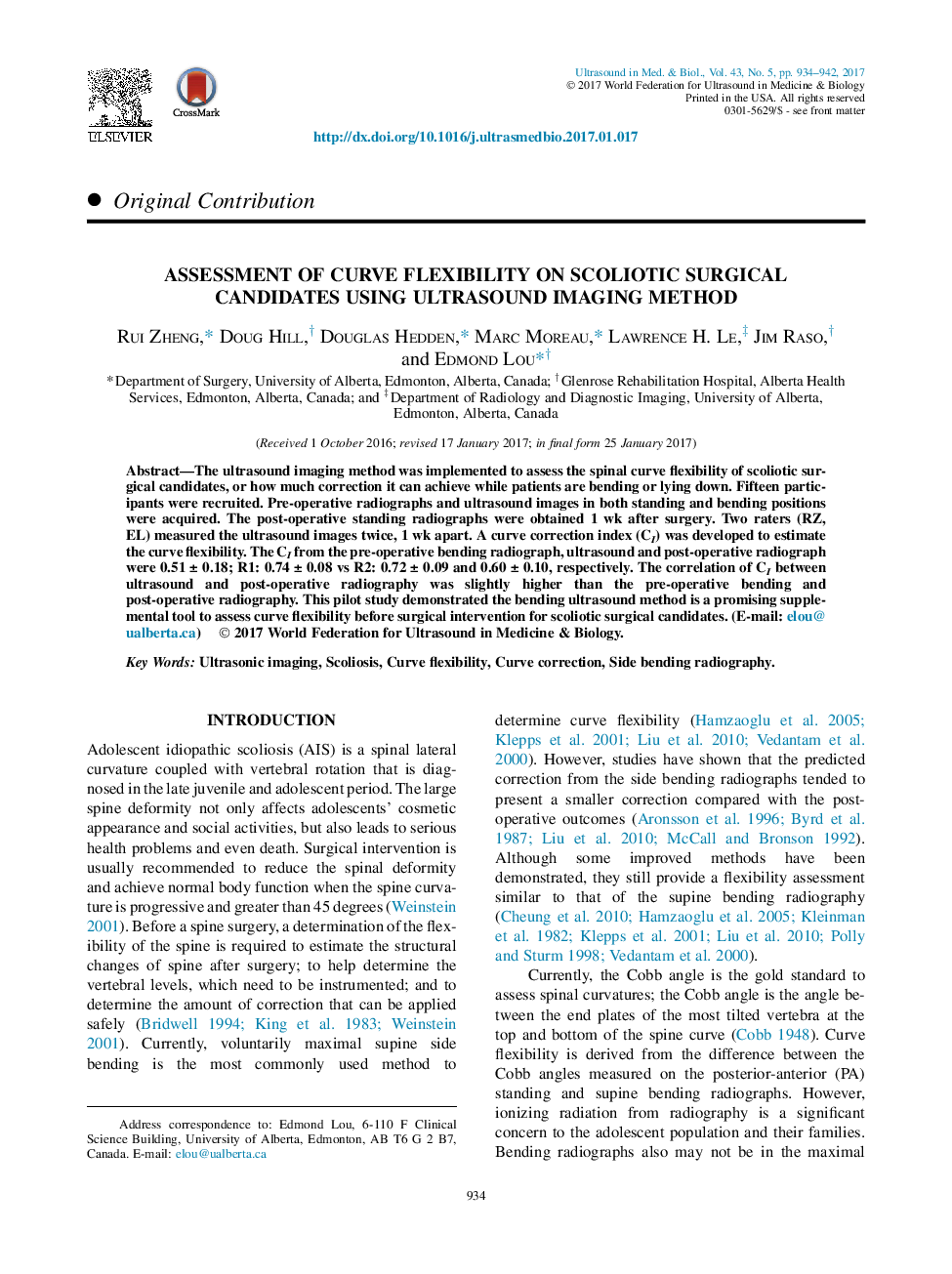| Article ID | Journal | Published Year | Pages | File Type |
|---|---|---|---|---|
| 5485949 | Ultrasound in Medicine & Biology | 2017 | 9 Pages |
Abstract
The ultrasound imaging method was implemented to assess the spinal curve flexibility of scoliotic surgical candidates, or how much correction it can achieve while patients are bending or lying down. Fifteen participants were recruited. Pre-operative radiographs and ultrasound images in both standing and bending positions were acquired. The post-operative standing radiographs were obtained 1 wk after surgery. Two raters (RZ, EL) measured the ultrasound images twice, 1 wk apart. A curve correction index (CI) was developed to estimate the curve flexibility. The CI from the pre-operative bending radiograph, ultrasound and post-operative radiograph were 0.51 ± 0.18; R1: 0.74 ± 0.08 vs R2: 0.72 ± 0.09 and 0.60 ± 0.10, respectively. The correlation of CI between ultrasound and post-operative radiography was slightly higher than the pre-operative bending and post-operative radiography. This pilot study demonstrated the bending ultrasound method is a promising supplemental tool to assess curve flexibility before surgical intervention for scoliotic surgical candidates.
Related Topics
Physical Sciences and Engineering
Physics and Astronomy
Acoustics and Ultrasonics
Authors
Rui Zheng, Doug Hill, Douglas Hedden, Marc Moreau, Lawrence H. Le, Jim Raso, Edmond Lou,
